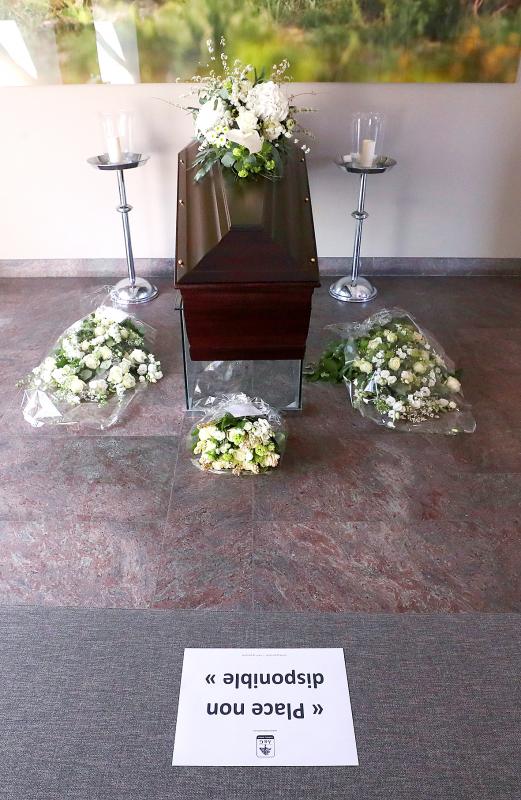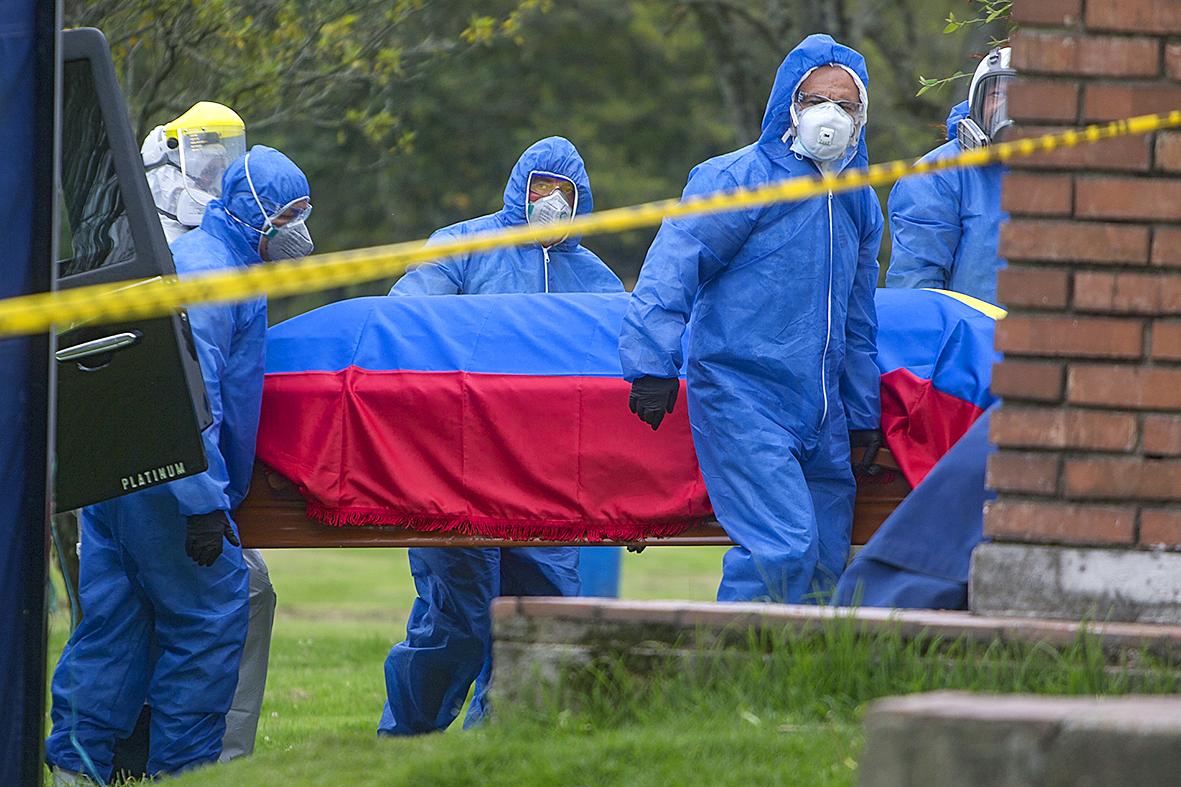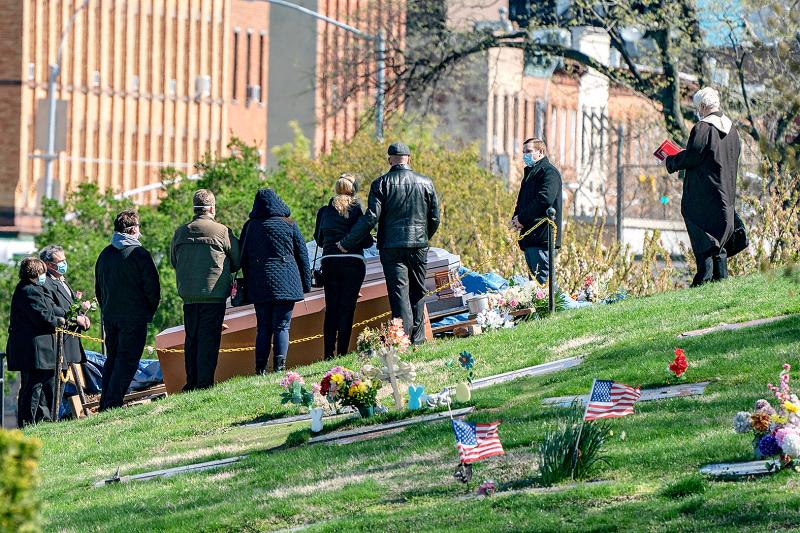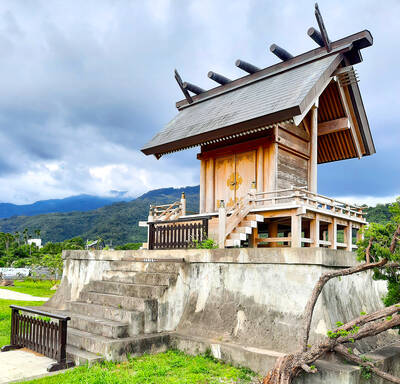Last week the funeral for Pat McCann was held at the St Peter Julian Eymard Catholic church in Mooroolbark, in Melbourne’s east. Her sons, Charlie and Mike, read the eulogy. There was a singer, an organist and a full mass led by a family friend and priest. Tommy Roe’s Party Girl, a track McCann and her family knew by heart, was beamed out into the church.
Her four children and their partners, each sitting two meters apart, listened in. One grandson, trapped with his wife in Guatemala, followed the service online. A granddaughter, back from Brazil, tuned in from Melbourne’s Crown Promenade hotel where she has been in quarantine.
At the end of the service, cameras followed the casket out to the waiting hearse. The small group at the church went to the cemetery for the burial and, later, the wider circle of family and friends got together for a drink over the video conferencing app Zoom.

Photo: Reuters
This is a funeral in the time of coronavirus. Not typical, but something that maintains important rituals when the most human expressions of consolation and solace — physical touch and togetherness — have been forbidden.
“Certainly it felt different,” Mike says. Although she was 95, McCann still had enough friends around her that she could have filled the church well beyond the 10 mourners permitted under COVID-19 restrictions.
Grandkids, nieces, nephews and friends around the country watched the service online.

Photo: AP
Charlie says at first the family had wondered if a Web cast was necessary: “But it was well worthwhile because it would have been pretty lonely if it was just us in the church. The fact that others saw it, it really meant a lot.”
The family plans to get together in person on the anniversary of Pat’s death — if things are back to normal by then.
The restrictions in place to slow the spread of COVID-19 have turned rituals around death and mourning upside down, says Adrian Barrett, vice-president of the Australian Funeral Directors Association and a fourth-generation funeral director.

Photo: Reuters
The family business — William Barrett and Sons in Bunbury, Western Australia — has survived periods of immense social upheaval: world wars and financial collapses.
It has been shaped by cultural changes that have affected the way death is observed, such as more secular mourning rites, and including women in active roles.
But Barrett says the restrictions in place now are “unprecedented.”
Death is a time of distress for the bereaved and people have an innate need to be with each other for support.
The fact mourners are permitted to congregate as a group of up to 10 — while weddings are restricted to five people, and all other types of gathering to two — speaks to the significance of the role funerals play.
But choosing those 10 people when ordinarily there might be 500, is complicating the grieving process for many, as is the requirement to stand two meters from someone you would naturally comfort with a hug or a kiss.
“All the things we know about funerals and how they can help that transition in people’s lives when they’ve lost someone have been taken away,” Barrett says. “It means we have to come up with alternatives to help people in that transition.”
In recent weeks, Barrett has witnessed anger and guilt among families grappling with the restrictions.
He estimates that among the association’s membership there has been a doubling in reports of people choosing not to have funerals — from about 10-15 percent to 20-30 percent — or to delay a service until social distancing measures ease. He worries this will prolong the grieving process for many.
But amid the sadness and frustration, there is also understanding, creativity and innovation. Webcasting has been used by the funeral industry for more than a decade but the global pandemic means its time has truly come.
“That’s the one thing about the current time,” Barrett says.
“Almost everyone has social media and an internet connection. People can talk and leave comments. It’s probably still not as good as being there, but it’s something.”
CREATING NEW RITUALS
“People more than ever are creating their own ways of mourning,” says Jennifer Watkins.
Watkins has been a funeral director for more than 30 years and has recently submitted her PhD research investigating changes in western funeral practices since the 1960s.
Her work focuses particularly on regional Australian communities and women.
“Death rituals have been changed and reinterpreted repeatedly over hundreds of years,” Watkins says. “Now those changes are even more stringent.”
Watkins and her husband and daughter run West Coast Funerals in Port Lincoln, on South Australia’s Eyre peninsula.
They have a chapel on site that can hold 90 people. Since the arrival of COVID-19 measures, it hasn’t been used once.
Instead, families opt to hold a service at home. Many of the usual traditions are still there: a table with memories of the deceased, a selection of songs they loved. There’s a greater emphasis on sharing photos.
Funerals have become more invidualized through time. Watkins thinks COVID-19 is bringing greater focus on those personal touches and new ways of finding meaning. She’s relieved people are continuing to hold a gathering of some form, given the role funerals play in the early stages of grief.
“People have been surprisingly accepting that this is a serious virus — I haven’t had anyone objecting greatly to the fact they have these restricted numbers,” she says. “The funerals we’re having are still meaningful.”
James MacLeod is the managing director of Tobin Brothers Funerals in Melbourne, one of the largest private funeral companies in Australia.
In January it helped the China Funeral Association to write guidelines for funeral procedures after the coronavirus outbreak in Wuhan.
When it became clear Australia would be affected by shutdowns the company wrote to the prime minister, Scott Morrison, and the Victorian premier, Daniel Andrews, stressing the importance of funerals.
MacLeod argued they were more essential than ever at a time when people were distressed at not being able to visit older family members in aged-care facilities.
“Some will no doubt see this as a letter written from self-interest,” MacLeod wrote. “I do however write as a concerned individual for the long-term mental health of the client families that we care for.”
Tobin Brothers has established a mortuary specifically for patients who have died from COVID-19. There are strict handling procedures, including personal protective equipment to be worn by staff.
Family members — for both COVID and non-COVID deaths — are permitted to view the body at a distance in a special room.
MacLeod says viewings have helped families who in some cases have not seen their loved one in the weeks before their death.
“There’s so much these people are going through — we’ve got to do all we can and more to assist them,” he says.
“That physical response that seeing their loved ones brings is really important.”
Since the introduction of the restrictions, MacLeod says, some funerals have been attended by as many as 700 people online.
MUSLIM COMMUNITY
In western Sydney, Ahmad Malas is the operations director for the Lebanese Muslim Association.
The association is the caretaker for a number of mosques, including Australia’s largest at Lakemba. In March it closed its mosques and prayer halls ahead of the introduction of tight restrictions and limits on gatherings.
For a community that often mourns together in large numbers, the changes to funerals have been “a very big struggle and people are getting very upset”, Malas says.
“If you’ve got a big family, 10 people could just be the sisters and brothers, not the nieces, nephews, the grandkids. That’s a really big thing people are coming to terms with.”
Muslims bury their dead as soon as possible as a means of honoring the deceased. Traditional mourning rites involve washing, shrouding and viewing of a body, followed by communal prayer in a mosque.
Gatherings of more than a thousand people are common. Communal prayer is followed by burial and then condolences and mourning at the family home.
Malas says the restrictions mean viewing the body can only occur at a distance, with no touching or kissing, and the closure of the mosques means communal prayer is held in the funeral parlor.
Families now unable to host people in their home have turned to Facebook and WhatsApp.
He has had regular calls from people in distress.
“People come together at a time of death and they can’t do that,” he says. “It really tests the ties between people and those relationships. I guess the positives are people are trying to make an effort to stay in touch with one another. They’re contacting their loved ones. They’re trying to do everything they can to stay in touch.”
Scott Dawson used to say mixed netball was an untapped resource for dating. He and his wife, Jemillah, met when they were recruited by friends to the same netball team in Bunbury, Western Australia.
Five years ago, Scott, 35, was diagnosed with a brain tumor. Initial treatment went well but the tumor returned aggressively shortly after the birth of their daughter, Maisie, in May last year.
Dawson’s health had started deteriorating when the government first limited funeral gatherings to 50 people.
“His mum and I looked at each other and thought ‘Oh no,’” Jemillah Dawson says.
By the time of his funeral on April 1, that number was down to 10.
Immediate family and his oldest friend attended in person, and more than 250 watched the funeral service online. Scott was a popular bloke, with friends all over the country and overseas.
“It was really hard, but we tried to keep it as simple as possible,” Jemillah says. “The feedback we got from people was that they did feel like they were being acknowledged by her.”
But she felt emotionally torn on the day although the service was better than she had expected and “the best we could make it for him.”
Scott was a huge Carlton fan. All guests, including those tuning in online, wore navy blue. A Carlton flag was draped over the coffin and the club theme song played as mourners left the chapel. The same song played when Scott and Jemillah walked into the reception on their wedding day in 2017.
Not being able to surround herself with friends and loved ones has made Jemillah feel as though she’s “not really going through the normal grieving process.”
There will be a larger get-together when things return to normal, but at the moment processing complex emotions feels delayed.
“I did feel really hollow afterwards because we couldn’t have a wake or anything,” she says.
“So there was no time to debrief or cry or laugh with each other. That was the hardest part of it, not being able to have people come and talk to you and hug you.”

On Sept. 1, President William Lai (賴清德) said “If it is for the sake of territorial integrity, why doesn’t [China] take back the lands occupied by Russia that were signed over in the treaty of Aigun? Russia is now at its weakest, right?” “You can ask Russia [for the land back] but you don’t. So it’s obvious they don’t want to invade Taiwan for territorial reasons,” he added. Lai was referencing an 1858 treaty under which, along with an 1860 convention, Russia annexed about one million square kilometers of Manchurian Qing territory in Outer Manchuria, including Haishengwei — today known as

One of my more inexplicable ambitions is to board or alight from a train at every one of the 240 Taiwan Railway Corp stations that offer passenger services. I reckon I’ve still got over 100 to go, but if I live to a ripe old age, I might complete the list. Anyhow, this means that when I took a train to Luye Township (鹿野) in Taitung County a few weeks ago, I felt as if I’d accomplished something as soon as I’d passed the ticket gate. The station is less than 100m east of Highway 9, whereas the most interesting

This month Taiwan received a brutal Christmas present as the Chinese Nationalist Party (KMT) passed all three of its desired amendments, making recalls of elected officials more difficult, gutting the Constitutional Court and altering the budgetary allocations to local governments. The nation at present has no ultimate authority to determine the constitutionality of government actions, and the local governments, largely controlled by the KMT, have much greater funding. We are staring into an abyss of chaos. The amendments to the Act Governing the Allocation of Government Revenues and Expenditures (財政收支劃分法), if they become law (as of this writing President William Lai

Dec. 30 to Jan. 5 Premiering on Jan. 4, 1956, Xue Pinggui and Wang Baochuan (薛平貴與王寶釧) unexpectedly packed theaters for the next 27 days. Taiwan’s first 35mm Hoklo-language (commonly known as Taiwanese) movie beat out the top Hollywood blockbuster, Land of the Pharaohs, and the Mandarin-language Peach Blossom River (桃花江) in box office sales, kicking off a craze that lasted until around 1970. More than 800 Hoklo-language films were made despite government attempts to promote Mandarin. The Chinese Nationalist Party (KMT) owned the nation’s three major production houses, mostly creating Mandarin films filled with anti-communist messages and patriotic propaganda. But most